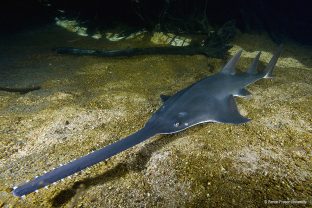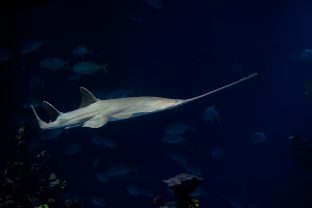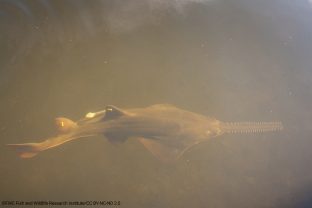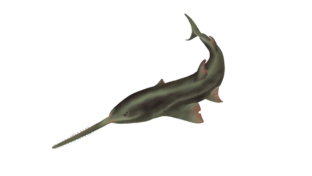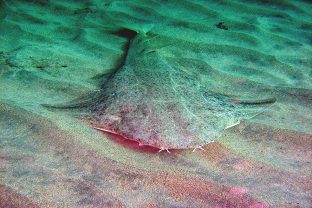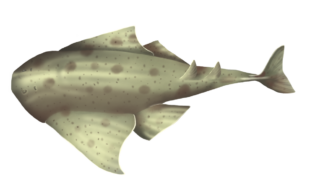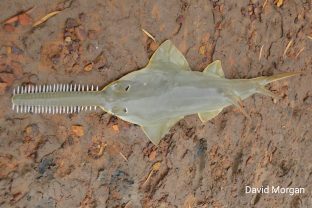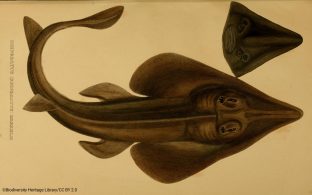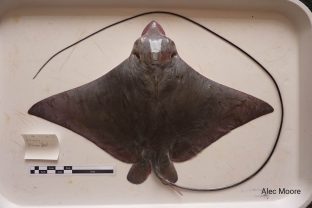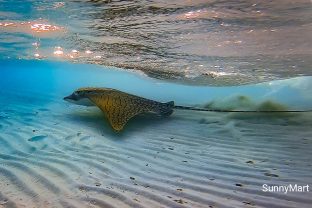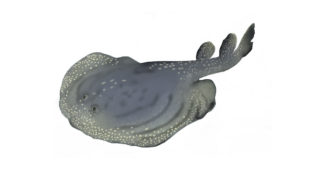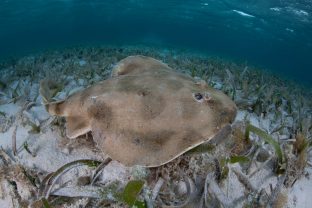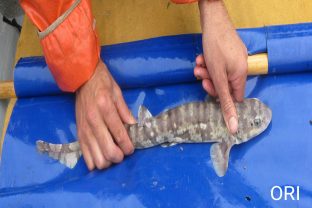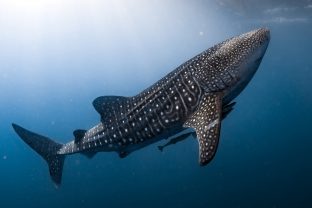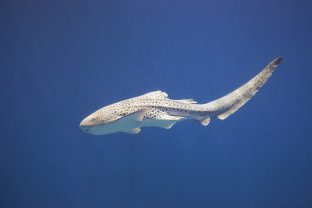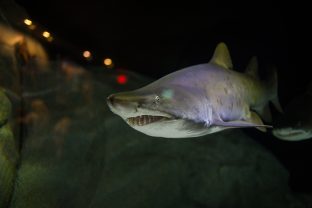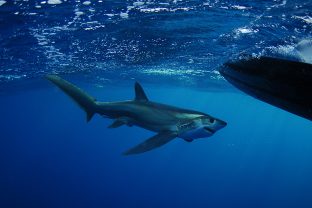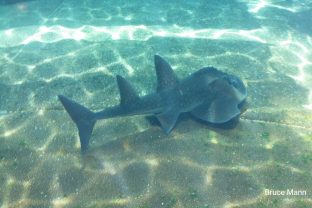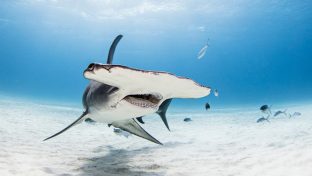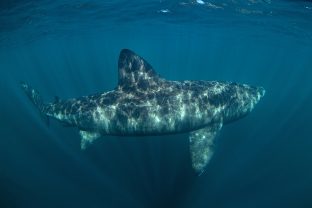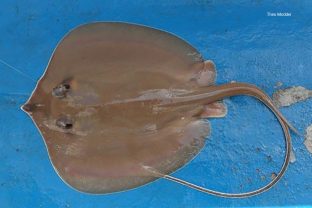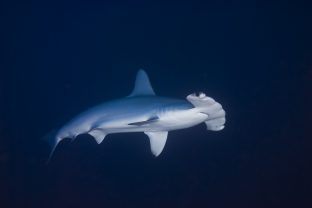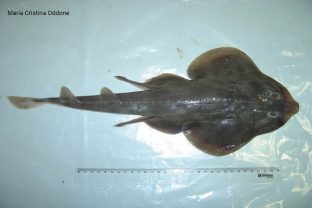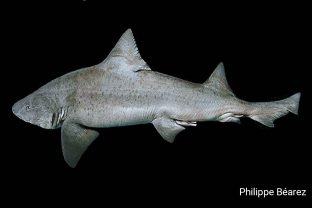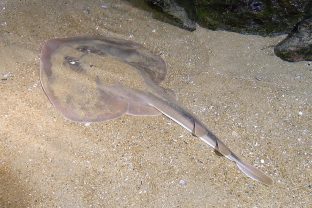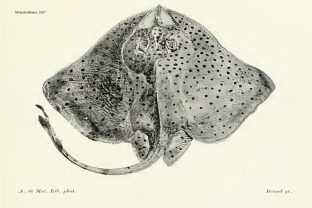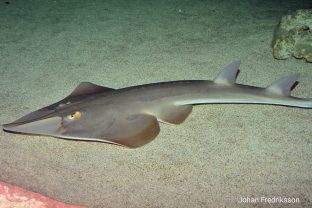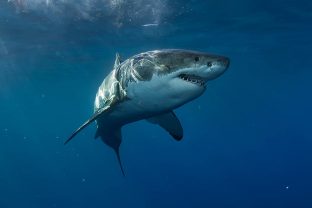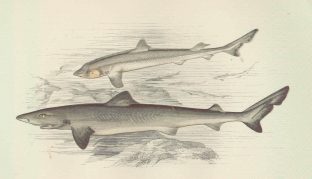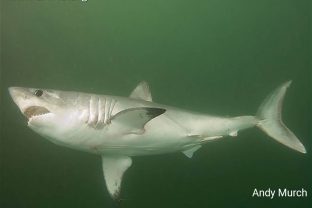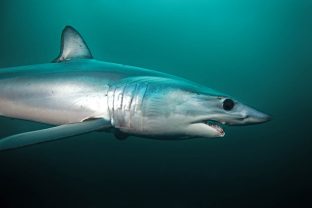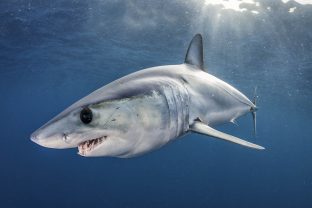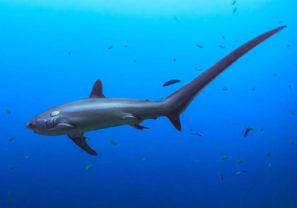TOP EDGE SHARKS AND RAYS
Largetooth Sawfish
Pristis pristis
The largetooth sawfish not only is number 1 on the EDGE Shark list, but also has the highest-ranking score of any EDGE species!
Conservation Attention
Good
Green Sawfish
Pristis zijsron
The green sawfish is the largest of all existing sawfishes, reaching up to 7.3 meters in length and its teethed rostra accounts for almost one third of that length!
Conservation Attention
Low
Smalltooth Sawfish
Pristis pectinata
Sawfish are characterised by their large and unique saw-like rostra. The smalltooth sawfish has a narrower saw-like rostrum and is a smaller size than its relative the largetooth sawfish.
Conservation Attention
Good
Narrow Sawfish
Anoxypristis cuspidata
The narrow sawfish is also known as the knifetooth or pointed sawfish. The narrow sawfish is one of the smaller sawfish species, only reaching 4.7 m in length!
Conservation Attention
Good
Angelshark
Squatina squatina
The Angelshark is a distinctive shark species found in the northeast Atlantic and Mediterranean Sea. It is a “flat shark” (one that is dorsoventrally flattened) and an ambush predator, relying on camouflage to surprise its prey.
Conservation Attention
Good
Sawback Angelshark
Squatina aculeata
The sawback angelshark is the only species of angel shark with spines present down its back during the adult phase, a feature that gives this species its common name.
Conservation Attention
Good
Dwarf Sawfish
Pristis clavata
The dwarf sawfish is also known as the Queensland sawfish and is the smallest of all the sawfish species reaching just over 3m in length.
Conservation Attention
Medium
Brazilian Guitarfish
Pseudobatos horkelii
Previously known as Rhinobatus horkelii, the Brazilian guitarfish displays an interesting reproduction mode by keeping embryos dormant when they are in cool deep waters for many months until they ascend to shallow waters.
Conservation Attention
Low
Longhead Eagle Ray
Aetobatus flagellum
The longhead eagle ray is an uncommon species, of which little is known. This eagle ray has a comparatively long, beak-like snout, and a whip-like tail, three times as long as its body.
Conservation Attention
Low
Ornate Eagle Ray
Aetomylaeus vespertilio
The largest of the three species in the genus, the ornate eagle ray is an uncommon ray that has not been seen in great numbers since the species was described in 1852.
Conservation Attention
Low
Ornate Sleeper Ray
Electrolux addisoni
The ornate sleeper ray is the only species of its genus (Electrolux) and was only formally described in 2007! It was named after a “well known” brand of vacuum due to its electrogenic properties and forceful sucking action when it feeds.
Conservation Attention
Very Low
Caribbean Electric Ray
Narcine bancroftii
Caribbean electric rays, like all electric rays, have the ability to produce an electrical charge to deter predators or stun prey!
Conservation Attention
Low
Smoothback Angelshark
Squatina oculata
The smoothback angelshark is the smallest of the angel shark species and lives in the temperate waters of the Mediterranean Sea and Eastern Atlantic Ocean.
Conservation Attention
Low
Mottled Eagle Ray
Aetomylaeus maculatus
Little is known about the ecology of the mottled eagle ray such as its reproductive biology, maximum age and growth rate, which is essential to conserve the species.
Conservation Attention
Low
Natal Shyshark
Haploblepharus kistnasamyi
The natal shyshark is one of many poorly known species of South African catsharks.
Conservation Attention
Very Low
Winghead Shark
Eusphyra blochii
Also known as the slender hammerhead, the winghead shark is named after its exceptional cephalofoil hammer-shaped head which can be almost as wide as half its body length.
Conservation Attention
Medium
Whale Shark
Rhincodon typus
The whale shark is the worlds largest living shark and the largest living fish in the sea. The largest individual recorded was 20m in length and weighed 42 tonnes! This charismatic gentle giant attracts researchers and divers alike.
Conservation Attention
Good
Zebra Shark
Stegostoma fasciatum
The zebra shark gets its name from the colouration of the juveniles, which have black and white striped markings. As they mature their colouration changes from stripes to spots and that is why they are also known as leopard shark!
Conservation Attention
Low
Sand Tiger Shark
Carcharias taurus
The sand tiger shark is a large coastal species, popular in aquariums due to its “scary” protruding teeth and its tolerance in captivity.
Conservation Attention
Good
Bigeye Thresher Shark
Alopias superciliosus
Distinguishable from the two other species of thresher sharks, the pelagic and the common thresher, by its namesake – a pair of extremely large eyes used to detect prey in low light.
Conservation Attention
Good
Bowmouth Guitarfish
Rhina ancylostoma
The bowmouth guitarfish’s mouth undulates like a longbow. Although this is a species of ray, it is also known as the mud skate or shark ray across its range.
Conservation Attention
Low
Great Hammerhead
Sphyrna mokarran
The iconic great hammerhead is the largest of 8 species of hammerhead sharks from the genus Sphyrna, reaching up to 6m. It is one of the most threatened species of hammerheads due to the high value of its large dorsal fin.
Conservation Attention
Low
Basking Shark
Cetorhinus maximus
The basking shark is the second biggest fish in the sea, after the whale shark. It is the only extant species in the family Cetorhinidae. As an enormous filter feeding species it can be encountered swimming slowly or “basking” near the surface whilst ram-feeding on plankton in cold, coastal waters.
Conservation Attention
Good
Bluegray Carpetshark
Brachaelurus colcloughi
Also known as the Colclough’s shark, it is a rare, nocturnal species found off the coast of Eastern Australia. It was first discovered in 1908 by scientist James Ogilby who named the shark after his friend, John Colclough, and since then it has only been recorded 50 times!
Conservation Attention
Very Low
White Skate
Rostroraja alba
The white skate is one of the largest European skate species, reaching lengths of 2m. It lives on rocky and sandy bottoms up to a depth of up to 400m.
Conservation Attention
Low
Snaggletooth Shark
Hemipristis elongata
The snaggletooth shark, also known as the fossil shark, is a member of the weasel shark family, Hemigaleidae, and is the only extant species in the genus Hemipristis.
Conservation Attention
Low
Daisy Stingray
Fontitrygon margarita
The daisy stingray is a coastal ray inhabiting part of the west coast of Africa. Once common, it is now rarely recorded in markets and landings.
Conservation Attention
Very Low
Blackchin Guitarfish
Glaucostegus cemiculus
Blackchin guitarfish are a large species of guitarfish found in the Eastern Atlantic and Mediterranean Sea. Blackchin guitarfish bury themselves in the oceans sandy bottom and were once a daily sight at fish markets in Southern Europe during the 18th century.
Conservation Attention
Very Low
Scalloped Hammerhead
Sphyrna lewini
The scalloped hammerhead shark is characterised by having a notch in the centre of its hammer-shaped head.
Conservation Attention
Low
Shortnose Guitarfish
Zapteryx brevirostris
Shortnose guitarfish are endemic to the coasts of southern Brazil, Uruguay and Argentina. It is an olive- brown colour with a heart shaped disc and is named after its short snout.
Conservation Attention
Low
Roughnose Stingray
Pastinachus solocirostris
The roughnose stingray is a small species of ray found only off the coast of Malaysian Borneo and Indonesia, named after the unusually rough texture of its snout. It lives in mangrove estuaries and turbid coastal habitats.
Conservation Attention
Very Low
Harrisson’s Dogfish
Centrophorus harrissoni
Also known as the Dumb Gulper Shark, this species is found off the coasts of Australia and New Zealand in deep sea waters.
Conservation Attention
Medium
Sharpfin Houndshark
Triakis acutipinna
The sharpfin houndshark is an extremely rare shark, known from only two specimens.
Conservation Attention
Very Low
Fanray
Platyrhina sinensis
The fanray is a little-known species of ray found off the coast of East Asia, with white or yellow tipped thorns along its tail.
Conservation Attention
Very Low
Whitespotted Izak
Holohalaelurus punctatus
The whitespotted izak, also known as the African spotted catshark, is a small endemic shark found off the coasts of South Africa, Mozambique and Madagascar. Not much is known about the biology or life history of this rare species.
Conservation Attention
Very Low
Honeycomb Izak
Holohalaelurus favus
The honeycomb izak is a relatively large species of catshark found off the coasts of South Africa and Mozambique. It has not been seen since the 1970s!
Conservation Attention
Very Low
Spotback Skate
Atlantoraja castelnaui
The spotback skate is a large species of coastal skate found only off the coast of Brazil, Uruguay and Argentina.
Conservation Attention
Low
Common Guitarfish
Rhinobatos rhinobatos
The common guitarfish occurs from the north of Spain throughout the Mediterranean coast, towards the south on the west coast of the Atlantic down to Guinea Bissau and possibly Namibia. Despite this wide range, their populations have declined over the past decades.
Conservation Attention
Low
Great White Shark
Carcharodon carcharias
The great white is perhaps one of the most iconic shark species, gaining notoriety from the 1975 film, “Jaws”. Compared to other species, the great white shark is relatively well studied, however elements of its biology remain a mystery.
Conservation Attention
Good
Longnose Marbled Whipray
Fluvitrygon oxyrhyncha
The longnose marbled whipray is an extremely rare species found in the Indo-Malay Archipelago and is only known from five specimens that are part of museum collections.
Conservation Attention
Very Low
White-edge Whipray
Himantura signifer
The white-edge whipray is a rare freshwater ray, named after the white strip around the edge of its disc. Its distribution is very patchy and limited to some river systems in Southeast Asia.
Conservation Attention
Very Low
African Wedgefish
Rhynchobatus luebberti
The African wedgefish is a large species of ray that is now very rare. It is found off the West coast of Africa, but little is known about this species and numbers are thought to have declined dramatically.
Conservation Attention
Very Low
Giant Freshwater Whipray
Urogymnus polylepis
The giant freshwater whipray is, as the name suggests, a freshwater ray from Southeast Asia that inhabits large rivers and can be seen in the water margins feeding.
Conservation Attention
Very Low
Kitefin Shark
Dalatias licha
The kitefin shark is a relatively common, solitary deep-water shark, capable of reaching depths of 1,800m!
Conservation Attention
Very Low
Tope Shark
Galeorhinus galeus
The tope shark is a large houndshark, and the only species in the genus Galeorhinus. It is found worldwide in temperate waters.
Conservation Attention
Low
Porbeagle
Lamna nasus
The porbeagle is a coastal and offshore species found in temperate and cold water. It can live up to 46 years and maintain its body temperature 10°C above the surrounding water temperature!
Conservation Attention
Medium
Longfin Mako
Isurus paucus
Very little is known about the biology and population of this elusive shark. As it names suggests their pectoral fins are quite long when compared to its closest relative the shortfin mako.
Conservation Attention
Low
Shortfin Mako
Isurus oxyrinchus
The Shortfin Mako is the fastest swimming shark species, obtaining speeds of up to 35km/h and can jump up to 6m out of the water!
Conservation Attention
Good
Spotted Shovelnose Ray
Aptychotrema timorensis
The spotted shovelnose ray is an extremely rare species of guitarfish found in a small area of the Timor Sea off the coast of northern Australia.
Conservation Attention
Very Low
Pelagic Thresher
Alopias pelagicus
This species has an extraordinarily long caudal fin it uses a whip to stun its prey, and distinctive prominent eyes. Although it has a circumpolar range, little is known on its biology and ecology.
Conservation Attention
Low
